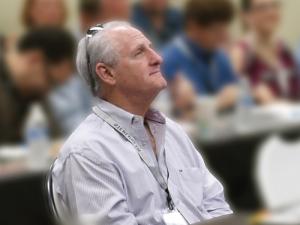I’ve had a full-service accounting firm in Dallas since 1987, but I got to being a practice owner in a roundabout way. First I sold computer hardware and services for IBM’s Service Bureau Corporation. Then I joined a regional CPA firm, Alford Meroney & Company, where I rose to partner in charge of their Management Consulting Practice. In 1980, when Alford Meroney merged into Arthur Young, I became an Arthur Young Management Consulting Partner, a position I held until 1985 when I left to raise venture capital to acquire a company that had a new technology for building bank buildings.
Well, the company I set up to acquire did have valuable technology, but the timing just wasn’t right. With the collapse of the banking sector in the late 80s, I found myself having to find a new source of income. Not seeing any other job prospects, I pulled out my CPA certificate, hung it on a wall in the spare bedroom and opened my accounting firm, which is still going nearly thirty years later. Although I have a few tax-only clients, my clients are mostly all small business owners. We want someone who can use us monthly for accounting work, at the end of the year for tax work and for consulting in between.
Running my own practice was going okay: I was making a living at it, but I wasn’t doing anything more than that. After 20 years in business, we were doing about $300,000 a year. I knew I needed to expand my business but I just didn’t have the management skills necessary to really make it grow into the type of practice that I wanted. Recognizing that I needed help in that area, I became a Sterling client and went through their executive training program.
The courses I took covered the full gamut of skills and competencies necessary for running an accounting practice. One thing that I found particularly helpful was the idea of measuring all aspects of the business, setting targets for those areas, and then determining how you will measure whether you are actually making progress toward meeting those targets. Part of this entails looking at what organizational changes are necessary to bring performance up to the level required to meet those targets.
Now, it’s true that other management companies or courses will also tell you that you need to set goals and targets for your practice. What sets Sterling apart from other management companies is that they don’t just tell you that it’s a good idea to set targets, but they provide you with the executive skills needed to manage personnel and get the work done so you actually make those targets that you set. Once I returned home from my training, I set billing targets for the firm for each month, we implemented performance graphs for each week, and we met regularly to go over those graphs and what they showed in terms of areas we needed to strengthen in order to make sure we made our targets. We also implemented a bonus program for staff so they would benefit when the office as a whole met its monthly billing quota. Then my Sterling consultant was there to hold me accountable for meeting those targets. Whenever I get stuck, she provides me with additional training that helps me organize aspects of the practice better so that I do reach the targets that I set.
After six years with Sterling, my practice has more than doubled, and I can see that we are still nowhere near our potential. A short time ago I targeted the practice to hit $1 million, but now I see that the figure is too low. There is no doubt that I will get $1 million; the only questions are how quickly I can surpass that target and how much further I can go.
More importantly, as our revenue increased, my profit grew even more which has allowed me to do a lot of things that I wanted to do. Recently I spent several months traveling the world. I’ve done a full scale renovation of my condominium. I got married and followed that wedding with a European honeymoon. Subsequently my wife and I have gone to Africa, including climbing Mount Kilimanjaro, and spent three weeks in Outer Mongolia, camping out and traveling by horse and camel. Now we are planning extensive trips for 2015 and 2016. But all of that extra money and vacation time doesn’t mean I need to slave away the rest of the year when I am in the office. Even during tax season, the most hours put in is 50 hours per week.
The Sterling program has all the components necessary to turn a skilled accounting practitioner into an expert business owner. This starts with acquiring skills necessary to effectively communicate with and manage personnel and clients. Then it adds specific knowledge and tools necessary to address each aspect of the business, including personnel, marketing, finance and organization.
Overall, my life is exceedingly good, but that doesn’t mean there isn’t room for improvement. I am not someone who likes to just sit back and relax. I get a real charge out of growth and from attracting new clients, so I am looking forward to seeing how much further I can take the business, while still leading a balanced life: taking plenty of time off traveling the world with my wife and spending time with our children and grandchildren.

